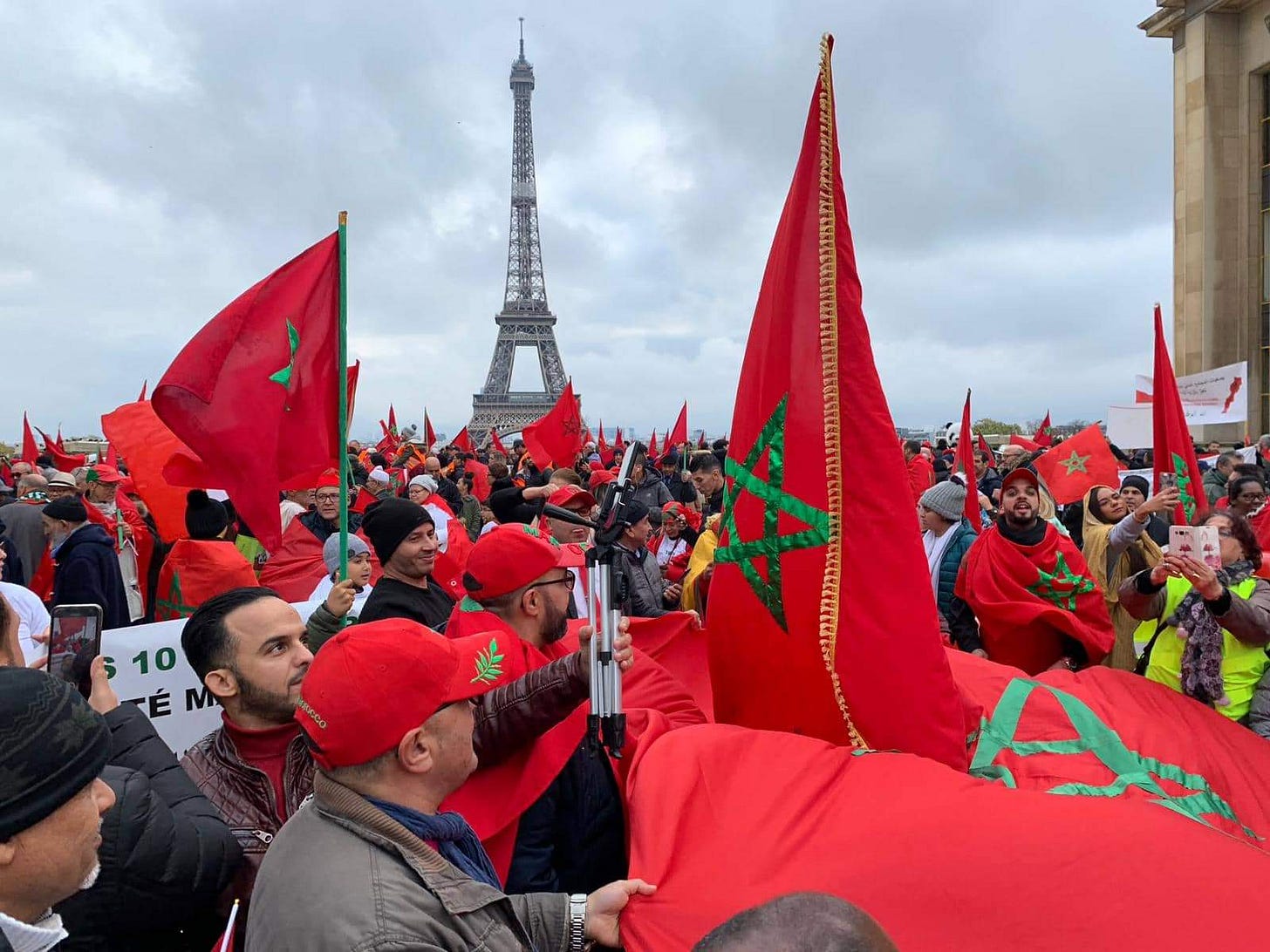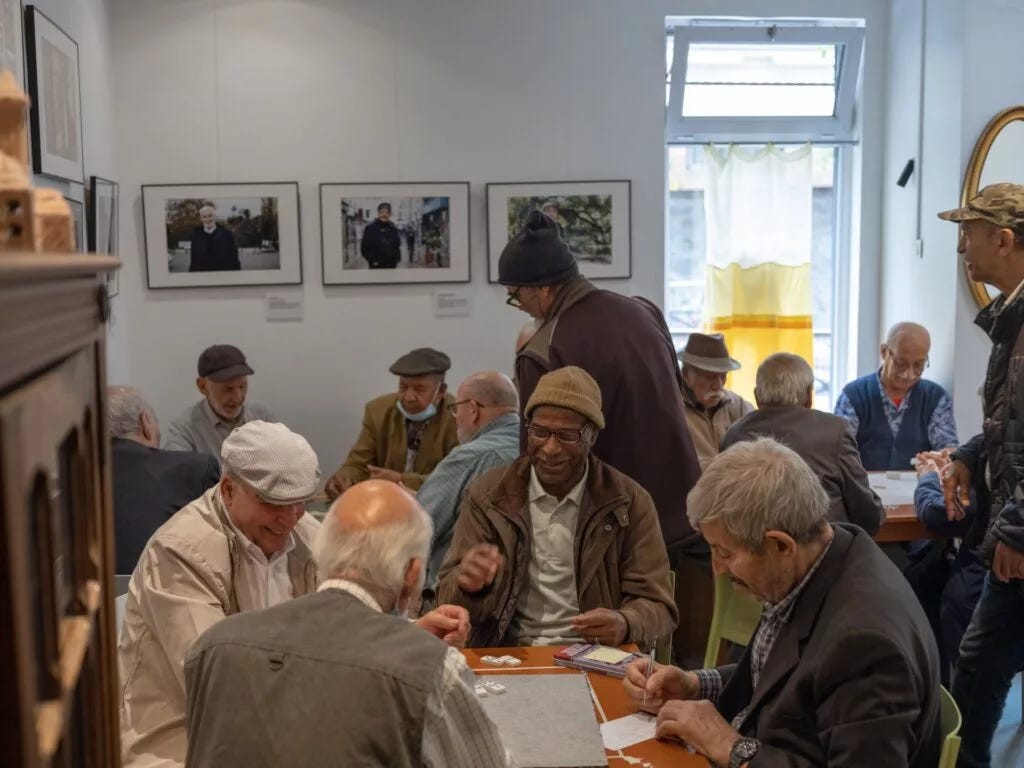The idea of leaving Morocco’s villages, plains, and cities for Europe and the Gulf was not merely an escape from poverty and narrow horizons; for Morocco’s youth, it represented the first step toward finding a country broad enough for their dreams and ambitions, a place in this world where Moroccans could be more than marginal figures in fragile economies.
The global Moroccan community is estimated at between 6 and 6.5 million people, spread across approximately 100 countries. Over five million are officially registered with the Kingdom’s consulates. In addition, there is a significant number of Moroccans born in Morocco but residing abroad, as well as those born overseas to one or two Moroccan parents who hold dual nationality.
Europe remains the primary destination for Moroccan migrants, receiving about 89% of the diaspora. France leads with over one million Moroccans as of 2020, followed by Spain—which recorded the fastest growth in Moroccan population between 1990 and 2020. Moroccan presence has also increased in the Gulf, Italy, and Scandinavia, including Sweden and Norway.
According to a study by the Economic, Social and Environmental Council, Moroccan migration has gone through three main stages. The first, from 1965 to 1985, was linked primarily to labor in mining, heavy industry, and construction—governed by bilateral labor agreements with countries like France, the Netherlands, Germany, and Belgium.
The second stage, from 1985 to 2000, focused on agriculture in Spain and Italy. Since the beginning of the 21st century, the third stage has been marked by the migration of skilled professionals across various fields and of agricultural and labor workers to Europe, the Americas, and the Gulf.
The First Generation of Migrants
The initial waves of Moroccan migration to Europe date back to the French and Spanish protectorates beginning in 1912, when colonial powers—especially France—needed labor for mines and factories, prompting recruitment from young Moroccans.
During this era, the French colonial authorities prioritized control over occupied territories, mobilizing human and material resources to support France’s economy and military arsenal, particularly during World War I. Toward that end, France’s War Ministry established the “Colonial Labor Organization,” responsible for managing Moroccan labor—imposing rigorous selection and employment processes across sectors to serve colonial interests.
After World War I ended, most laborers returned home due to the temporary nature of their contracts. But France’s economic boom reopened migration channels by 1936, culminating in a decree on July 13, 1938, which created France’s first official migration office.
Between 1938 and 1940, this office organized three batches of around 5,000 Moroccan workers each. The first two were assigned to agriculture—especially sugar beet cultivation—and the third directed to munitions factories and French military units, with many participating in World War II.
By the 1960s, Moroccan migration expanded unprecedentedly and diversified in destinations, extending beyond France to Belgium, the Netherlands, Germany, the UK—and to countries like Spain and Italy that were not traditional migrant destinations. Despite this diversification, France remained the primary destination.
Earlier migration to France was often coercive, driven by strict geographic selection—authorities recruited from specific Moroccan regions to meet agricultural and mining needs—creating tight geographic clusters of migrants in certain French districts.
In contrast, migration to the Gulf was not a direct result of colonial ties but emerged gradually after World War II due to Gulf states’ demand for labor. Initially, Moroccans migrated to Lebanon and Syria, and then to Gulf countries such as Saudi Arabia and Kuwait during the early oil boom. Migration was initially limited to seasonal or temporary contracts for artisans and skilled manual workers.
As oil prices rose and major construction boomed in Saudi Arabia, the UAE, and Kuwait, Moroccan government and private agencies began organizing work contracts. Moroccans began arriving not only as laborers, but also as nurses, technical staff, teachers, and administrators.
Morocco’s Migration Broker
The name “Moga” became iconic in the memory of Moroccan migration to France. A former military officer at the Office of Tribal Affairs in Guelmim (south Morocco) during the post-independence era, Moga’s mastery of local languages made him an ideal liaison between France and southern Moroccan regions during the large-scale recruitment of workers in the 1960s.
After his military service, Moga joined the French National Mining Company, grappling with labor shortages as French workers shunned the mines due to harsh conditions. He proposed an ambitious plan: recruit thousands of young Southerners to work in French mines.
Moga personally traveled to villages in Ouarzazate, Taroudant, Tiznit, and Tafraout, coordinating with Moroccan authorities to organize recruitment campaigns. These recruitment drives were sometimes persuasive and occasionally coercive. Candidates were required to be between 18 and 30 years old and weigh at least 55 kilograms. Selection was based solely on a physical exam under the scorching southern sun: no interviews or skills tests.
A green mark on the participant’s chest signified acceptance—leading to travel from Agadir to Casablanca and then to France—while a red mark signified rejection, sometimes viewed as a stigma in the villages. Folk songs mockingly referenced the “Moga failures.”
The migration of the 1960s and ’70s was not a solo enterprise—it was institutional and organized, involving both the French state and local Moroccan authorities. It transformed rural youth into mass laborers deployed to European mines, driven by hazy hopes of a better future rooted in nostalgic ties to the homeland.
During this period, the first generation of migrants joined labor and union movements in France, such as the National Union of Migrant Workers. They fought for migrant workers’ rights—especially those in the automotive industry—and gained access to healthcare, social benefits, and retirement, despite having received no formal training beforehand.
Moroccans in a Different Way
What began as male-dominated, short-term contracts gradually progressed into family-based migration. Spouses and children joined earlier migrant workers, turning temporary laborers into permanent residents, and eventually forming stable families in host countries.
This shift led to a rise in diaspora births, resulting in Europe’s second and third generations of Moroccans. By 2019, about 2.29 million individuals of Moroccan origin had been born in Europe—most of whom have spent their entire lives in the diaspora.
This settlement raises questions about integration. Although most Moroccan families preserved their cultural and religious traditions, they were clearly influenced by European environments. A generation emerged, fluent in a hybrid identity: mixing Moroccan Arabic or Amazigh with European languages, blending musical tastes, artistic preferences, and living styles that reflect multiple identities.
Far from being mere continuations of early migrant labor, these generations are playing a prominent role in forging a new Moroccan presence in Europe. Many have attained prominent positions in major European companies and institutions, challenging the outdated stereotype of the migrant laborer.
Moroccan Identity and the Far Right
In the context of rising right-wing populism and extremist discourse in Europe—targeting Muslim communities, accusing them of non-integration, extremism, and threatening European values—Moroccan migrants live in profound anxiety.
A Pew Research Center report documented rising anti-Muslim sentiment in these countries, affecting young Moroccans in schools and the job market.
Far-right parties in Europe adopt a hostile stance toward Muslims, perceiving them as a direct threat to “Christian nationalism in the continent.” In the Netherlands, Geert Wilders of the Freedom Party repeatedly attacked Muslims, calling to shut borders and even introduced legislation in 2018 to close mosques.
In Germany, the Alternative für Deutschland (AfD) openly denounces Islam as alien to Germany, labeling it the opposite of the German constitution, and warning of the “Islamization of the country.” This rhetoric has translated into frequent incitement of hostility and aggression toward Muslim communities.
In Italy, Matteo Salvini’s Lega has gone further, accusing Muslim immigrants of “spreading anti-Semitism” and claiming they represent the “nucleus of an Islamic caliphate” intent on conquering Europe—calling for urgent actions to counter this scenario and urging nationalists to assume power “before it’s too late.”
Though sometimes exaggerated, these extreme narratives reflect a political mood on the rise in certain European countries—leveraging demographic and economic anxieties to scapegoat migrants through every crisis and subject them to ongoing pressure.
From the first generation working in mines to the current generation in senior positions, the Moroccan diaspora’s journey represents a complex arc of adaptation and resistance. It began in colonial-era short-term labor but quickly evolved into stability that has helped reshape Europe’s identity itself.




